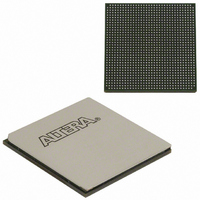EP3SL150F1152C3N Altera, EP3SL150F1152C3N Datasheet - Page 382

EP3SL150F1152C3N
Manufacturer Part Number
EP3SL150F1152C3N
Description
IC STRATX III FPGA 150K 1152FBGA
Manufacturer
Altera
Series
Stratix® IIIr
Datasheets
1.EP3SL150F780C4N.pdf
(16 pages)
2.EP3SL150F780C4N.pdf
(332 pages)
3.EP3SL150F780C4N.pdf
(456 pages)
Specifications of EP3SL150F1152C3N
Number Of Logic Elements/cells
142500
Number Of Labs/clbs
5700
Total Ram Bits
6390
Number Of I /o
744
Voltage - Supply
0.86 V ~ 1.15 V
Mounting Type
Surface Mount
Operating Temperature
0°C ~ 85°C
Package / Case
1152-FBGA
For Use With
544-2568 - KIT DEVELOPMENT STRATIX III
Lead Free Status / RoHS Status
Lead free / RoHS Compliant
Number Of Gates
-
Other names
544-2408
EP3SL150F1152C3NES
EP3SL150F1152C3NES
Available stocks
Company
Part Number
Manufacturer
Quantity
Price
Company:
Part Number:
EP3SL150F1152C3N
Manufacturer:
ALTERA
Quantity:
490
- Current page: 382 of 456
- Download datasheet (7Mb)
11–50
Table 11–16. Dedicated JTAG Pins
Stratix III Device Handbook, Volume 1
TDI
TDO
TMS
TCK
TRST
Pin Name
N/A
N/A
N/A
N/A
N/A
User Mode
Table 11–16
and during configuration to prevent accidental loading of JTAG instructions. The TDI,
TMS, and TRST have weak internal pull-up resistors while TCK has a weak internal
pull-down resistor (typically 25 kΩ). If you plan to use the SignalTap
array analyzer, you must connect the JTAG pins of the Stratix III device to a JTAG
header on your board.
Input
Output
Input
Input
Input
Pin Type
describes the dedicated JTAG pins. JTAG pins must be kept stable before
Serial input pin for instructions as well as test and programming data. Data is
shifted in on the rising edge of TCK. The TDI pin is powered by the
2.5-V/3.0-V/3.3-V V
If the JTAG interface is not required on the board, you can disable the JTAG circuitry
by connecting this pin to V
Serial data output pin for instructions as well as test and programming data. Data is
shifted out on the falling edge of TCK. The pin is tri-stated if data is not being
shifted out of the device. The TDO pin is powered by V
connecting a JTAG chain with multiple voltages across the devices in the chain,
refer to the chapter IEEE 1149.1 (JTAG) Boundary Scan Testing in Stratix III Devices
chapter in volume 1 of the Stratix III Device Handbook.
If the JTAG interface is not required on the board, you can disable the JTAG circuitry
by leaving this pin unconnected.
Input pin that provides the control signal to determine the transitions of the TAP
controller state machine. Transitions within the state machine occur on the rising
edge of TCK. Therefore, TMS must be set up before the rising edge of TCK. TMS is
evaluated on the rising edge of TCK. The TMS pin is powered by the
2.5-V/3.0-V/3.3-V V
If the JTAG interface is not required on the board, you can disable the JTAG circuitry
by connecting this pin to V
The clock input to the BST circuitry. Some operations occur at the rising edge, while
others occur at the falling edge. The TCK pin is powered by the 2.5-V/3.0-V/3.3-V
V
It is expected that the clock input waveform have a nominal 50% duty cycle.
If the JTAG interface is not required on the board, you can disable the JTAG circuitry
by connecting TCK to GND.
Active-low input to asynchronously reset the boundary-scan circuit. The TRST pin
is optional according to IEEE Std. 1149.1. The TRST pin is powered by the
2.5-V/3.0-V/3.3-V V
You should hold TMS at 1 or you should keep TCK static while TRST is changed
from 0 to 1.
If the JTAG interface is not required on the board, you can disable the JTAG circuitry
by connecting the TRST pin to GND.
C CPD
supply.
C CP D
CCPD
C CP D
supply.
.
supply.
CCPD
C CP D
.
.
Description
Chapter 11: Configuring Stratix III Devices
CCP D
© March 2011 Altera Corporation
For recommendations on
Device Configuration Pins
®
embedded logic
Related parts for EP3SL150F1152C3N
Image
Part Number
Description
Manufacturer
Datasheet
Request
R

Part Number:
Description:
CYCLONE II STARTER KIT EP2C20N
Manufacturer:
Altera
Datasheet:

Part Number:
Description:
CPLD, EP610 Family, ECMOS Process, 300 Gates, 16 Macro Cells, 16 Reg., 16 User I/Os, 5V Supply, 35 Speed Grade, 24DIP
Manufacturer:
Altera Corporation
Datasheet:

Part Number:
Description:
CPLD, EP610 Family, ECMOS Process, 300 Gates, 16 Macro Cells, 16 Reg., 16 User I/Os, 5V Supply, 15 Speed Grade, 24DIP
Manufacturer:
Altera Corporation
Datasheet:

Part Number:
Description:
Manufacturer:
Altera Corporation
Datasheet:

Part Number:
Description:
CPLD, EP610 Family, ECMOS Process, 300 Gates, 16 Macro Cells, 16 Reg., 16 User I/Os, 5V Supply, 30 Speed Grade, 24DIP
Manufacturer:
Altera Corporation
Datasheet:

Part Number:
Description:
High-performance, low-power erasable programmable logic devices with 8 macrocells, 10ns
Manufacturer:
Altera Corporation
Datasheet:

Part Number:
Description:
High-performance, low-power erasable programmable logic devices with 8 macrocells, 7ns
Manufacturer:
Altera Corporation
Datasheet:

Part Number:
Description:
Classic EPLD
Manufacturer:
Altera Corporation
Datasheet:

Part Number:
Description:
High-performance, low-power erasable programmable logic devices with 8 macrocells, 10ns
Manufacturer:
Altera Corporation
Datasheet:

Part Number:
Description:
Manufacturer:
Altera Corporation
Datasheet:

Part Number:
Description:
Manufacturer:
Altera Corporation
Datasheet:

Part Number:
Description:
Manufacturer:
Altera Corporation
Datasheet:

Part Number:
Description:
CPLD, EP610 Family, ECMOS Process, 300 Gates, 16 Macro Cells, 16 Reg., 16 User I/Os, 5V Supply, 25 Speed Grade, 24DIP
Manufacturer:
Altera Corporation
Datasheet:












